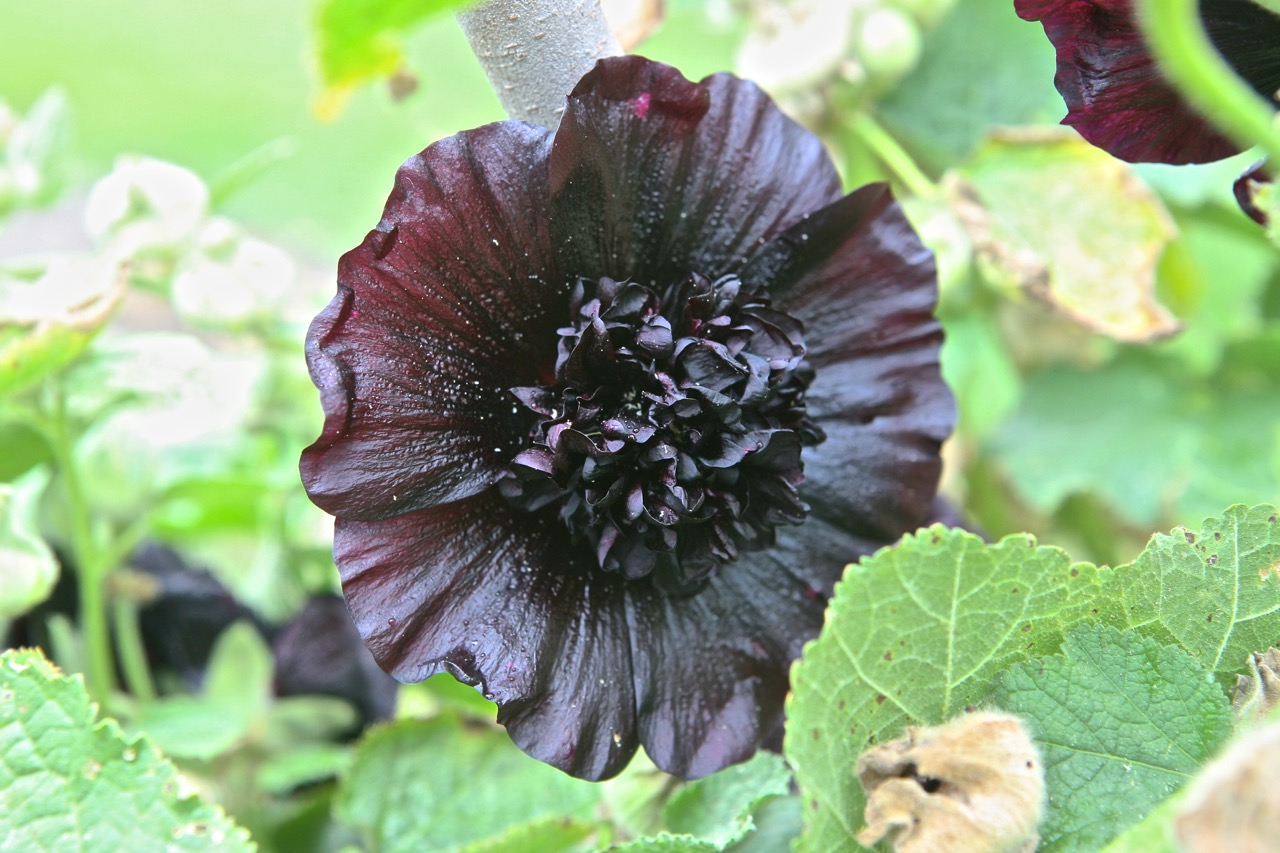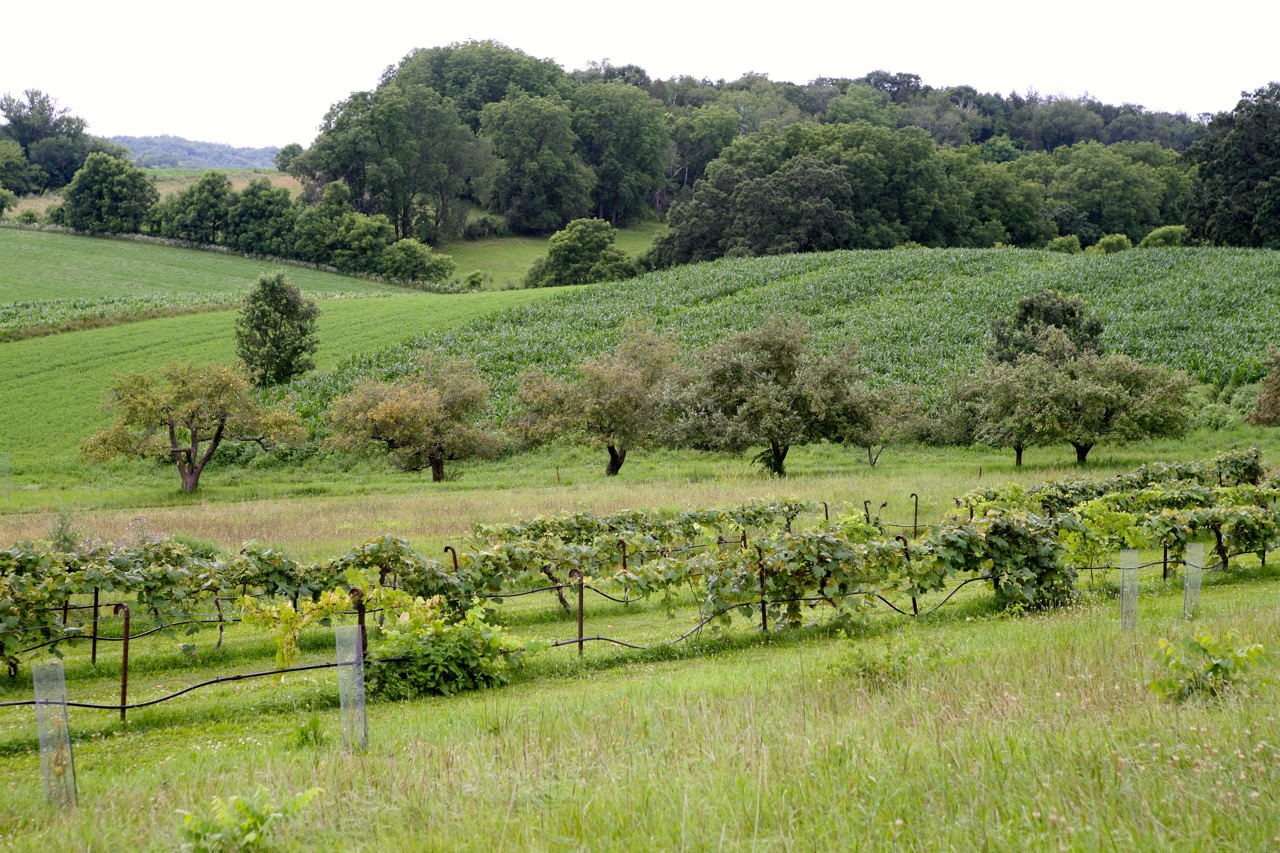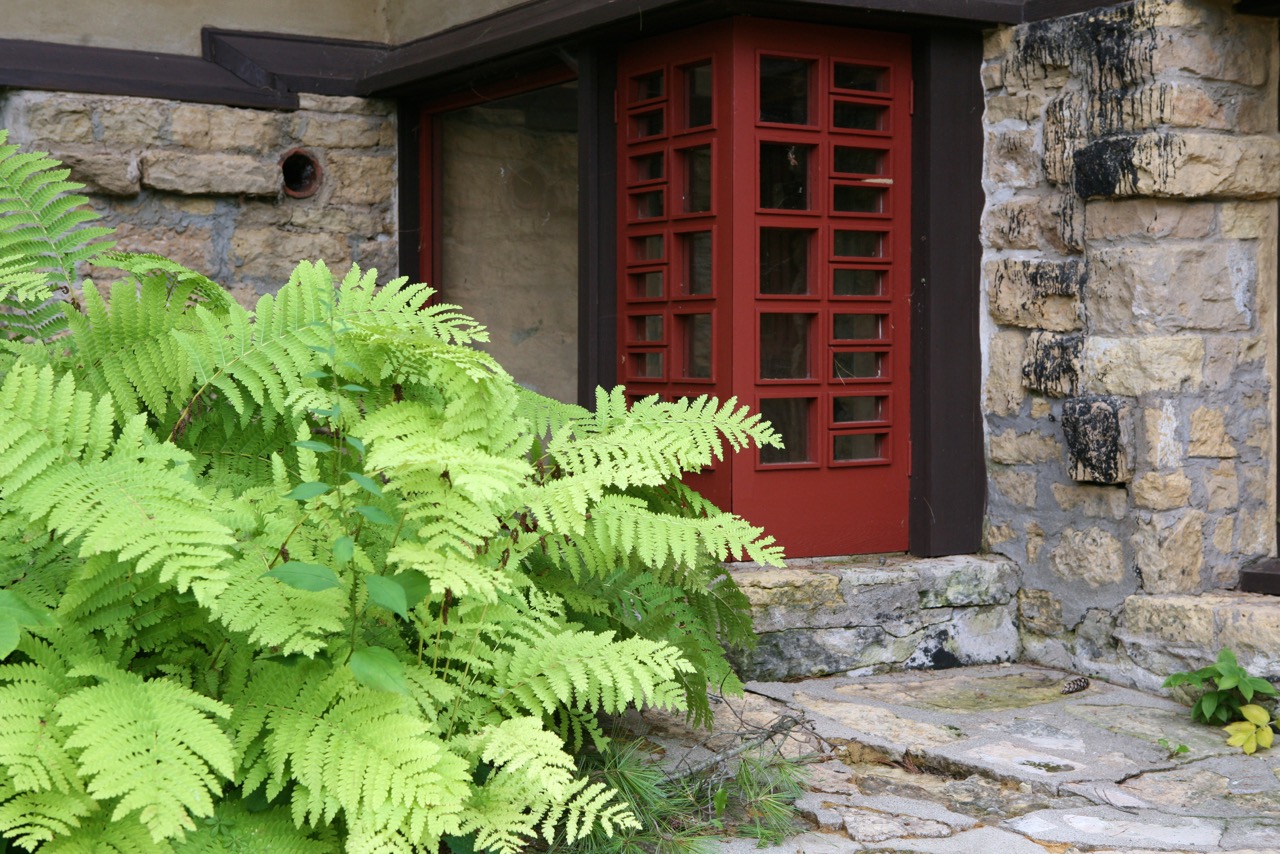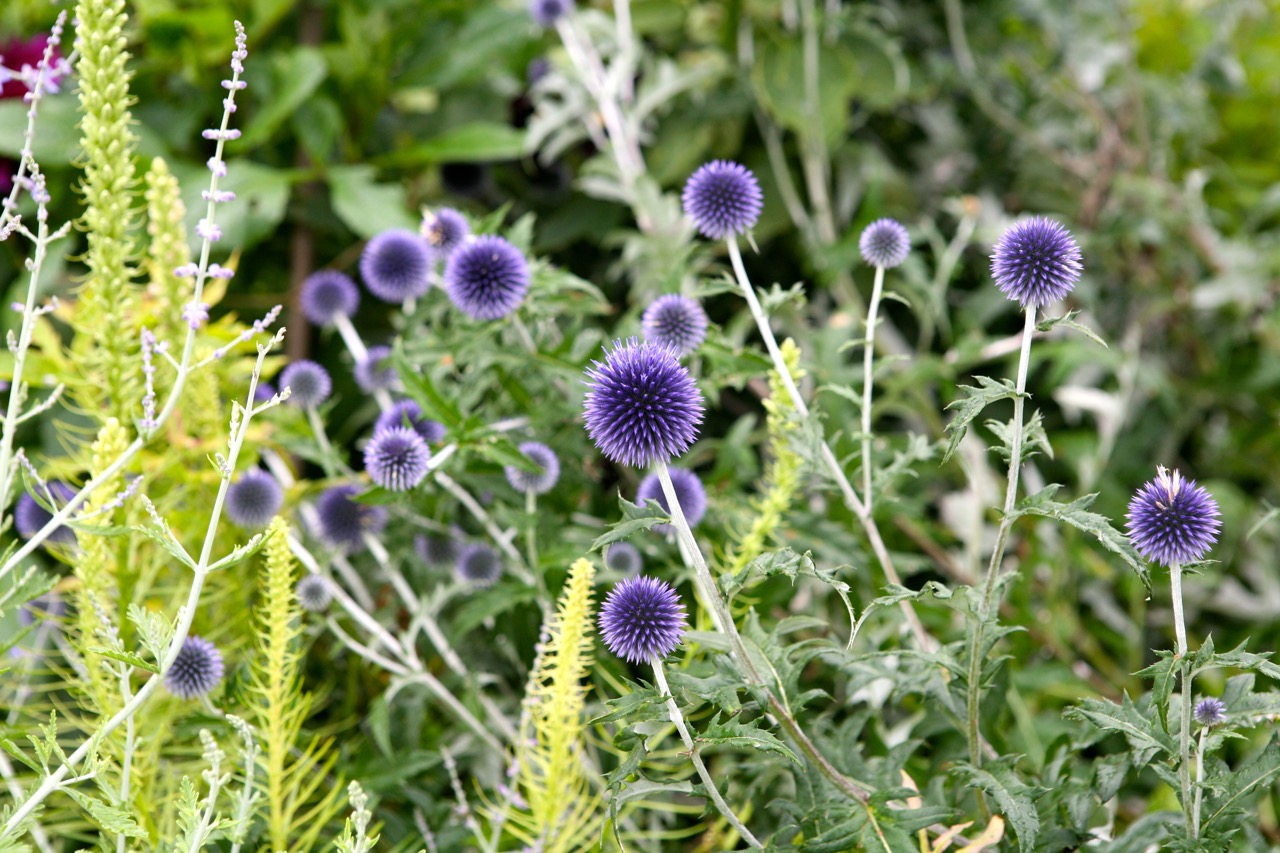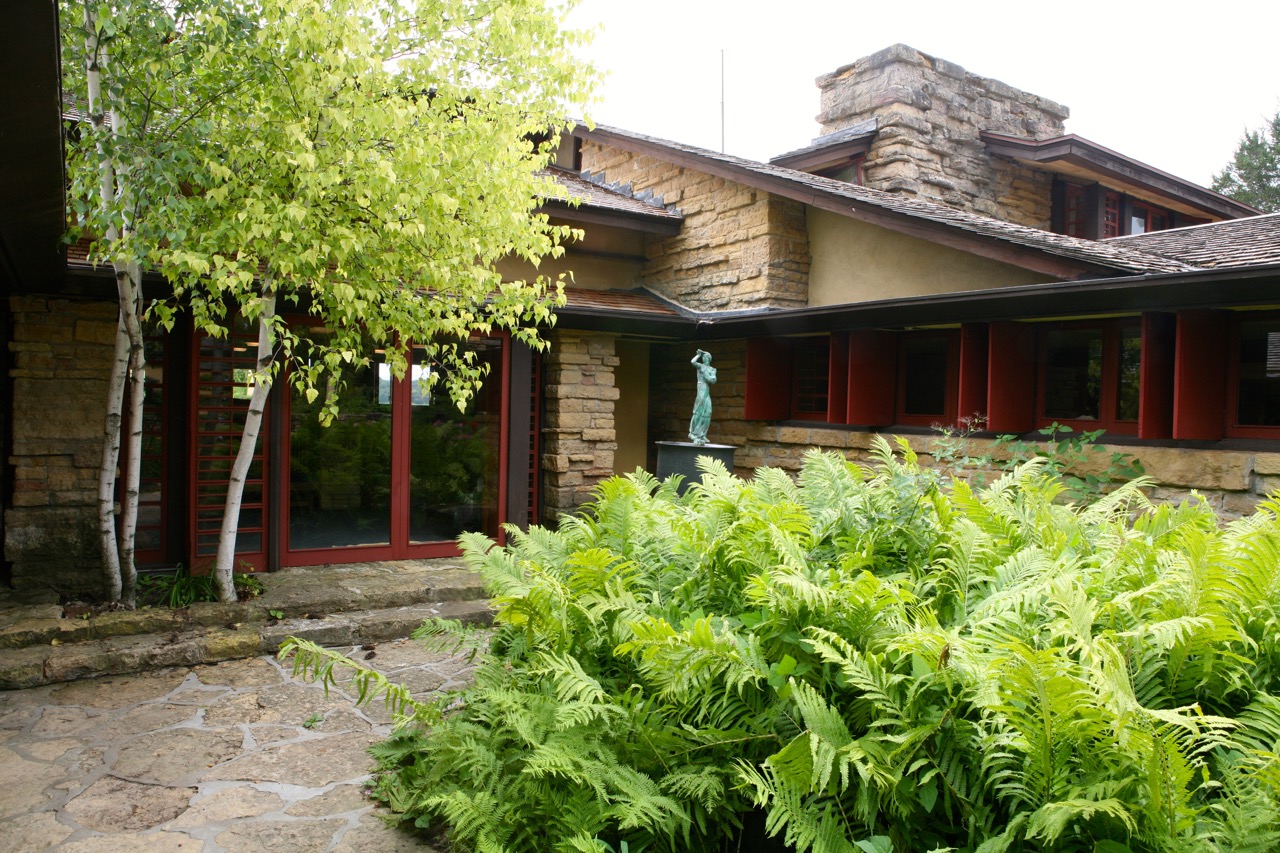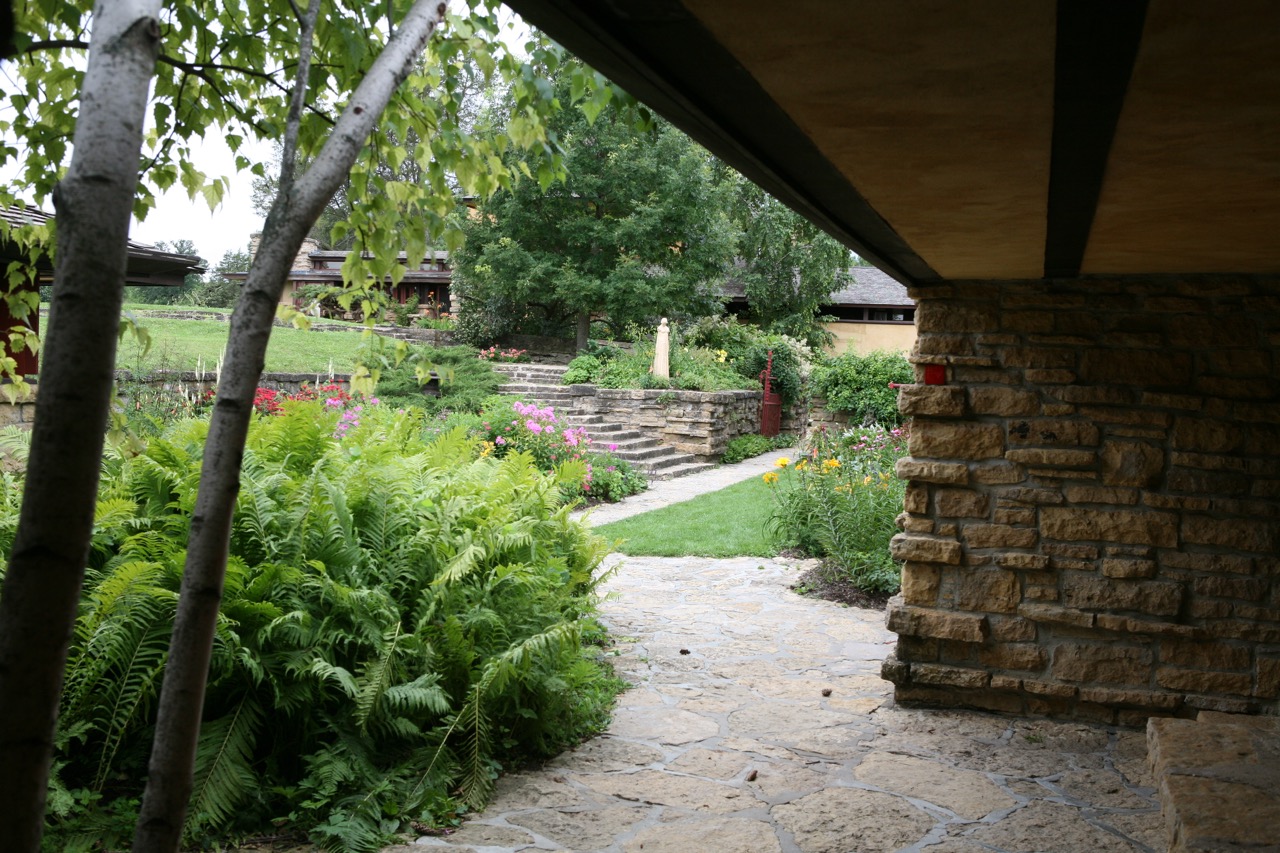“The good building is not one that hurts the landscape, but one which makes the landscape more beautiful than it was before the building was built.” - Frank Lloyd-Wright
Among the things that Wisconsin is famous for - the Green Bay Packers, cheese, and Harley-Davidson – it is Frank Lloyd Wright’s Taliesin in Spring Green, Wisconsin that has most intensely captured my attention.
Wright described Taliesin as, “a garden and a farm behind a workshop and a home.”
Taliesin is an organic composition of buildings and designed landscape nestled into an idyllic hillside of Wisconsin’s beautiful driftless region. An orchard, vineyard, and vegetable garden sit away from the house. Close in, an ornamental garden is completely integrated with the buildings. A block of ferns, reflecting pools, stone paving: every element is designed to create a seamless indoor/ outdoor connection. Here, the garden complements the building and vice versa.
Not one to be shy, Wright explained the process: “I saw it all, and planted it all, and laid the foundation of the herd, flocks, stable, and fowls as I laid the foundation of the house.”
Since 1980, however, the gardens bear the imprint of Wright Fellow, Frances Nemtin. She is the one who designed, planted and maintained the gardens (with his input) for nearly 30 years.
In an interview with Wisconsin Public TV’s Shelley Ryan, Nemtin shared the philosophy behind the garden:
“Mr. Wright wanted to integrate architecture, landscaping, lawns, flowers and trees, vineyard, orchard all into one organic idea nestled in the hill here. They named this Taliesin because ’taliesin’ is a word meaning ‘shining brow.’ And this describes the way that all the architecture is nestled in the side of the hill, the brow of the hill, not on top. Nothing should be on top of a hill. In fact , on the top of the hill, he removed a lot of trees; he wanted to open up the view.”
“All of his buildings are integrated in the landscapes. And in this case, he wanted the planting to augment the architecture. Next to his front door he planted a fern bed. He said, ‘please maintain this only as greenery. I don't want anything to compete with the architecture.’”
In Frances’ book Frank Lloyd Wright and Taliesin, she shares specific examples of how Wright’s philosophy played out in garden decisions and how the garden evolved.
In one of my favorite passages she writes: “White pines were planted outside the garden room. Their branches paralleled and extended over the long stone wall… and tied the trees visually to the architecture of garden and house.”
Nemtin also recalls how the gardens changed over time, “In the beginning, the carriageway approached the house; it was bordered with hollyhocks. But … [Wright] decided he didn't want that noise and dust coming near the house, so he changed it. And the hollyhocks went, it became a shade garden…: with hostas and begonias for color.”
Frances Nemtin passed away last April. Her legacy lives on in her writing and the gardens at Taliesin.
Since 1990, the property has been under the care of Taliesin Preservation. Their mission is “to preserve the cultural, built and natural environments that comprise the Taliesin property and to conduct public educational and cultural programming that provides a greater understanding of Frank Lloyd Wright’s architecture and ideas.”
Taliesin Preservation lead a wonderful tour program. I signed up for the 2 hour version which wasn’t nearly enough time. I recommend the 4-hour Estate tour and would consider going in the morning and afternoon to see the landscape in different lights.
Frances Nemtin, a Taliesin Fellow, was responsible for the garden design we see today. (Source: Frank Lloyd Wright Foundation)


